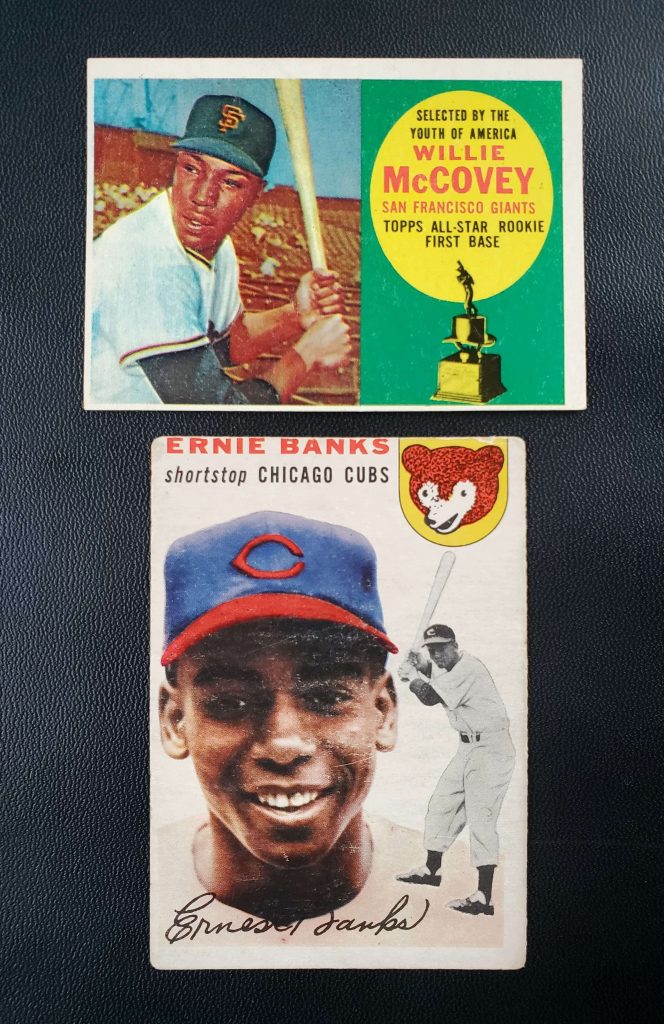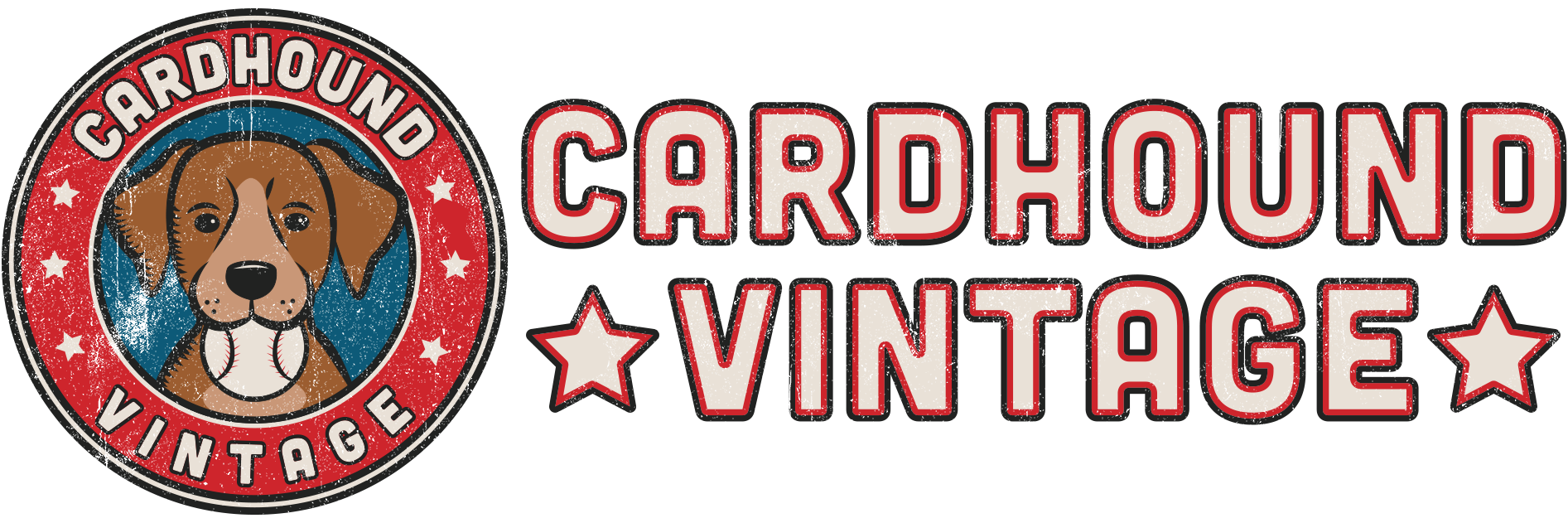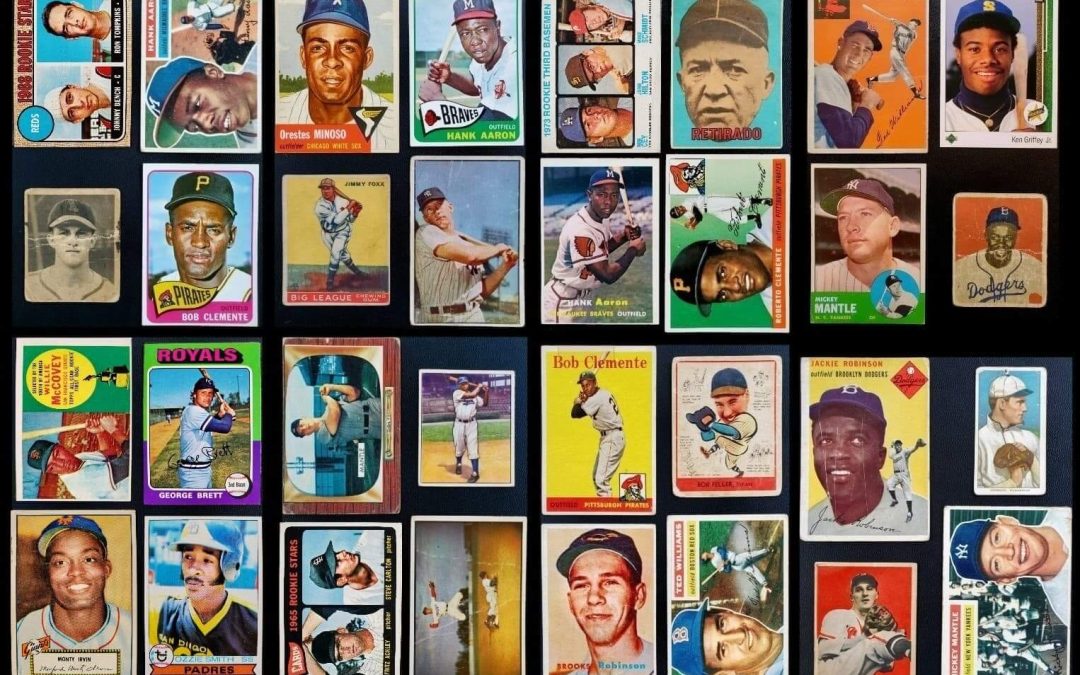Every collector knows there are 3 topics to never discuss at the holiday dinner table: religion, politics, and how to define “vintage” in the world of sports cards. I can’t help you with the first 2–and even the question “What years count as vintage?” does not have a clear-cut answer. But we can get some certainty about what vintage is–or at least, what it’s not!
Eras of Baseball Card Collecting
Pre-war and Post-war

Pre-war examples
The most clear-cut designation we can make in vintage collecting is between pre-war (before WWII) and post-war (after WWII). Pre-war cards are all obviously vintage. The question arises after WWII: where does vintage “end” and what came next? And as time marches on will more card years be added to the “vintage” category?
Since post-war entails both vintage and modern eras, several sub-era titles have emerged, such as Golden Era (1952-1969), Junk Wax era (1986-1995), and Modern Era (1996-current).

Post-war vintage icons
Junk Wax Era
The Junk War era began for sure by 1986. This era is defined by cards that were so overproduced as to be rendered largely worthless. You can still buy many 1980’s and 1990’s cards by the case, and for cheap. If you want to dive in and learn more about junk wax, it does have its fans and collectors and there are many great resources like this one. If you grew up in the late 1980’s it’s fun to rip a box from your childhood, and many cool cards can be had for cheap.
Many “junk wax” cards are now old–so can we define them as vintage? No, not really–junk wax will always be junk wax, even when it is 100 years old. “Vintage” is about more than just year–in the hobby, the term has some cachet and prestige, and isn’t merely about age. The term implies value, and to a degree, at least some scarcity in relation to junk wax era card sets.
Note: jokers on eBay like to try to fool unsuspecting buyers into thinking certain junk cards are valuable due to rare (and often uncorrected) errors or common print defects. Some junk era cards are actually fairly tough gems and thus have value as such–Upper Deck Griffey comes to mind.

Classic Junk Wax!
Defining “Vintage”
So, does the vintage era include 1985? This is where things get murky. Collectors define “vintage” in many different ways. There were still loads of cards produced in 1985, so the line between 1985 and 1986 is somewhat arbitrary.
Many vintage groups, including the main group I administer on Facebook, do draw the line at 1985. Others, 1980, Or 1979. Or even 1975. While I personally “prefer” 1980 at the latest, the question of what to do with 1981-1985–marginal sets but with some iconic rookie cards–isn’t worth the quibble for me. 1985 is fine, but purists will argue for an earlier year. It matters little as long as you understand the dynamics of junk wax and modern eras.
Defining “Modern”
Most define the modern era as beginning in 1993-1995. Just like Junk Wax has no definite beginning it also has no clear end! Arguably, today’s cards are also overproduced. There is very little information made available about print runs, but Topps flagship is everywhere. Base paper cards are thrown in the trash by breakers who only ship “hits.” I think that in hindsight, 2020’s will be known as the “Junk Slab Era,” with a market flooded by graded cards that are not worth the grading fee.

How will the future judge cool cards such as the Update Trout rookie?
Then What?
Honestly, as a vintage collector, I don’t really care! But eventually “modern” will be “old” and “the new modern” will need a name. Era titles are typically negotiated by the hobby after the fact, once the era has some defining characteristics. For example, we didn’t realize that Junk Wax cards were produced in such ridiculous numbers until much later. Maybe there will by “junk modern,” “junk slab,” ultramodern, post-Fanatics? Only time will tell!
So, what’s vintage?
In short, most collectors will at least agree that 1975 and earlier is true vintage. Any line drawn after that will have some detractors, but 1980 and 1985 both have plenty of support. For sure, 1986 and later isn’t vintage and never will be!
Hey, if you like reading about, learning about, or chatting about vintage, please Join Cardhound!







I have over 500 Nolan Ryan Cards in slips with finger pricking pointed edges along with many more other greats…. eventually these should be worth a couple of buck each…..